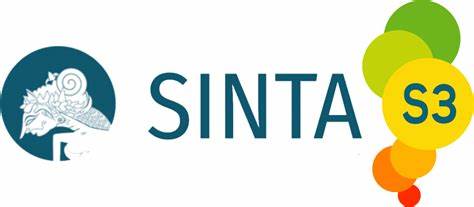AUTHENTIC VIDEO AND SUBTITLES ON ENGLISH VOCABULARY ENHANCEMENT (A Quasi-Experimental Study in One Private College in Bandung)
DOI:
https://doi.org/10.22460/eltin.v3i2.p%25pAbstract
Video is commonly used in instructional settings. The mixture of sound, image, and text -in the form of subtitles- has valued the video. It considers video as an understandable media for teaching vocabulary to foreign language students. This study is aimed at finding the effectiveness of using authentic video and subtitles in EFL teaching learning. This study is conducted at one of private colleges in Bandung. It is an experimental study. It compares the result of pre-test and post-test given to the students. The result of the t-test is the score in the t-test table (2.03 and 2.75) is smaller than the score obtain in this study (13.52), so the alternative hypothesis is accepted and the null hypothesis is rejected. It means that using authentic video and subtitles in teaching English vocabulary is effective.
Keywords: Authentic Video, Vocabulary, SubtitlesReferences
Al-Seghayer, K. (2001). The Effect of Multimedia Annotation Modes on L2 Vocabulary Acquisition: A Comparative Study, in Language Learning and Technology. Vol. V, No. 1: 202-232.. Available at: http://llt.msu.edu/vol5num1/alseghayer/default.pdf
Canning-Wilson, C. (2000). Practical Aspects of Using Video in the in the Foreign language Classroom. TESL Journal. Vol. VI, No. 11. Available at: http://iteslj.org/Articles/Canning-Video.html
Carter, R. & M. McCarthy (1988). Vocabulary and Language Teaching, in Carter and McCarthy (eds.) Vocabulary and Language Teaching. Longman: 1-59.
Council of Europe. (2001). Common European Framework of Reference for Languages:Learning, Teaching, Assessment. Cambridge, UK: Cambridge University Press.
Danan, M. (1992). Reversed Subtitling and Dual Coding Theory: New Directions for Foreign Language Instruction, in Language Learning. Vol. 42, No. 4: 497-527.
Nation, I. S. P. (2001). Learning vocabulary in another language. New York:Cambridge University Press.
Sherman, J. (2003). Using Authentic Video in the Language Classroom. Cambridge:Cambridge University Press.
Stempleski, S. (1990). Teaching communication skills with authentic video, in S. Stempleski & P. Arcadio (eds.) Video in Second Language Teaching: Using,Selecting and Producing Video for the Classroom. Washington: Teachers of English to Speakers of Other Languages: 7-24.
Talavan, N. (2007). Using subtitles in a multimedia environment to enhance listeningcomprehension for foreign language students of English, in Proceedings VI International AELFE Conference. Lisboa: ISCAL: 452-458.
Vanderplank, R. (1988). The value of teletext sub-titling in language learning, in ELT Journal. No. 42: 272-281





